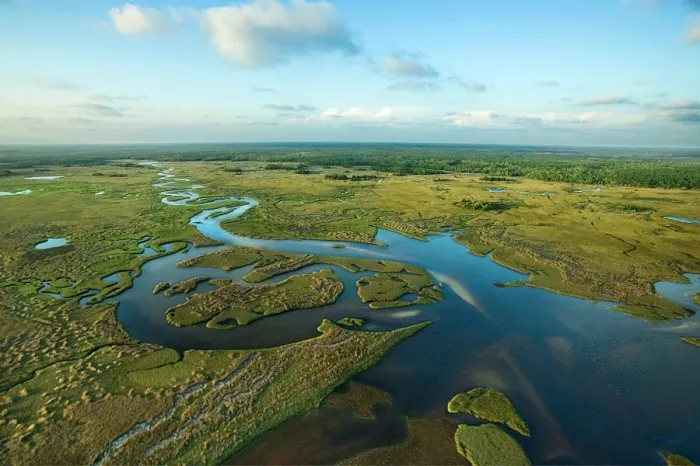Florida, known as the Sunshine State, offers a diverse array of destinations that cater to all types of travelers. From pristine beaches and vibrant cities to unique ecosystems and rich cultural heritage, Florida’s attractions are as varied as they are abundant. This comprehensive guide explores the best places to visit in Florida, analyzing each from multiple perspectives, including geographical location, culture, economy, and ecology.
1. Orlando: The Theme Park Capital
Geographical Location
Located in central Florida, Orlando is easily accessible via major highways and Orlando International Airport, making it a convenient destination for both domestic and international travelers.
Cultural Attractions
Orlando is home to world-renowned theme parks, including Walt Disney World Resort, Universal Orlando Resort, and SeaWorld Orlando. These attractions offer immersive experiences that celebrate storytelling, innovation, and entertainment.
Economic Impact
The tourism industry is a significant contributor to Orlando’s economy. In 2023, Orlando welcomed over 74 million visitors, with 67.8 million domestic and 6.1 million international tourists.
Ecological Considerations
Despite its urban development, Orlando maintains several green spaces and parks, such as Lake Eola Park and the Harry P. Leu Gardens, providing residents and visitors with natural retreats within the city.
2. Miami: A Cultural Melting Pot
Geographical Location
Situated in southeastern Florida along the Atlantic coast, Miami boasts a strategic location that offers both beachfront access and proximity to the Caribbean.
Cultural Diversity
Miami is renowned for its vibrant cultural scene, influenced by a rich tapestry of Latin American and Caribbean communities. Neighborhoods like Little Havana and Wynwood showcase this diversity through art, music, and cuisine.
Economic Significance
As a major hub for international trade and tourism, Miami’s economy thrives on sectors like finance, commerce, and hospitality. The Port of Miami is one of the largest cruise ports globally, further bolstering the city’s economic profile.
Ecological Highlights
Miami’s unique ecosystems include the nearby Everglades National Park, offering opportunities for eco-tourism and wildlife observation. The city’s coastal location also emphasizes the importance of marine conservation efforts.
3. Key West: Island Charm and History
Geographical Location
Key West, the southernmost point of the continental United States, is part of the Florida Keys archipelago. Its remote location offers a tranquil island atmosphere distinct from mainland Florida.
Cultural Heritage
Known for its laid-back lifestyle and artistic community, Key West has a rich history influenced by Bahamian and Cuban cultures. Landmarks like the Ernest Hemingway Home and Museum reflect the island’s literary and cultural significance.
Economic Overview
Tourism drives Key West’s economy, with visitors drawn to its historic sites, water sports, and vibrant nightlife. The island’s economy also benefits from fishing and maritime industries.
Ecological Aspects
Key West’s coral reefs and marine sanctuaries are vital ecological zones, supporting diverse marine life and offering snorkeling and diving opportunities. Conservation efforts aim to protect these fragile ecosystems from environmental threats.
4. St. Augustine: A Journey Through Time
Geographical Location
Located in northeastern Florida, St. Augustine is the oldest continuously inhabited European-established settlement in the continental United States.
Cultural Significance
St. Augustine’s rich history is evident in its well-preserved architecture and landmarks, such as the Castillo de San Marcos and the historic downtown district. The city’s cultural events and museums offer insights into its colonial past.
Economic Factors
Tourism centered around historical and cultural attractions is a primary economic driver for St. Augustine. Local businesses, including boutique shops and restaurants, benefit from the steady influx of visitors.
Ecological Features
The city’s coastal environment includes beaches and estuaries that support diverse wildlife. Conservation areas and parks provide opportunities for nature-based recreation and education.
5. The Everglades: Nature’s Wonderland
Geographical Location
The Everglades span a vast area of southern Florida, encompassing wetlands, swamps, and forests. This unique ecosystem is recognized as a World Heritage Site and a Wetland of International Importance.
Cultural Importance
The Everglades hold cultural significance for Native American tribes, such as the Miccosukee and Seminole, who have historically inhabited the region. Their traditions and knowledge contribute to the area’s cultural richness.
Economic Impact
Eco-tourism in the Everglades supports local economies through activities like airboat tours, fishing, and wildlife observation. These ventures emphasize sustainable practices to preserve the delicate environment.
Ecological Significance
Home to numerous endangered species, including the Florida panther and the American crocodile, the Everglades are crucial for biodiversity. Conservation efforts focus on habitat restoration and water quality improvement.
Conclusion
Florida’s diverse destinations offer something for every traveler, whether you’re seeking thrilling theme parks, cultural experiences, historical exploration, or natural beauty. Each location’s unique geographical features, cultural heritage, economic contributions, and ecological importance make Florida a multifaceted state worth exploring.

